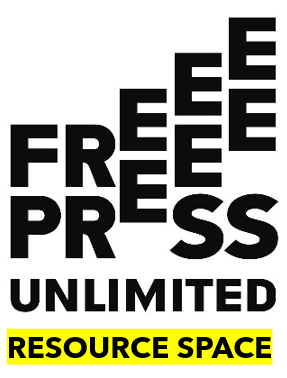Freedom of expression is any act of seeking, receiving, and imparting information or ideas, regardless of the medium used. Freedom of expression can be both protected and limited by regulations or statutes.
To ensure media freedom and freedom of expression, legislative frameworks should safeguard editorial independence and operational autonomy of the media, rights to privacy and data protection.
Depending on the jurisdiction, shield laws provide journalists with an complete or qualified privilege to protect their sources, both human or documents. Positive obligations exist to guarantee the safety of journalists (more on this on the Safety theme pages).
Jurisprudence in Council of Europe countries relating to the right to Freedom of Expression has been evolving in light of technological evolution and the rise of the platform economy where social media and search companies have developed into becoming key players in the freedom of expression ecosystem, both internationally and nationally.
Freedom of expression is not an absolute right and restrictions may apply, although there are differences between different jurisdictions. In comparison to Europe, restrictions on free speech are very limited in the USA. This means that the use of offensive words and phrases to convey political messages is allowed, even racist and extremist views as long as they do not create an immediate and present danger. This leaves certain vulnerable or minority groups relatively unprotected to hate speech as compared to other parts of the worlds. This protection follows from Article 20(2) of the ICCPR which states that:
Any advocacy of national, racial or religious hatred that constitutes incitement to discrimination, hostility or violence shall be prohibited by law. See also General Comment No. 11 of the Human Rights Council
In general, following from Article 19 of the ICCPR, restrictions are applied to the reputation of others and defamation, hate speech and national security, but depending on the country, these restrictions can be either laid down in civil law or in criminal law. The latter often leads to censorship or infringements on basic human rights.
The right to freedom of expression can only be limited by way of a three part test:
- Step 1: Any restriction on a right must be prescribed by law
- Step 2: The restriction must serve one of the prescribed purposes listed in the text of the human rights instrument
- Step 3: The restriction must be necessary to achieve the prescribed purpose
Resources
- Report of the Special Rapporteur for Freedom of Expression of the Inter-American Commission on Human Rights: National Case Law on Freedom of Expression. ‘A compilation of different judgments handed down over the past four years by national high courts that represent progress at the domestic level or enrich the regional doctrine and jurisprudence, while incorporating the inter-American standards in support of their decisions.’
- Media Legal Defence Initiative training manual on international and comparative media and freedom of expression law
- The Country Legal Frameworks Resource (CLFR) of the Global Network Initiative ‘is a detailed set of resources examining governments’ legal authorities to intercept communications, obtain access to communications data, or restrict the content of communications in more than 50 countries’.
- Developed by Article19, the Global Principles on Protection of Freedom of Expression and Privacy offer ‘a systematic analytical framework for assessing the ways in which the rights to freedom of expression and privacy are mutually reinforcing, and for determining the permissible limits which can be placed on these rights where they are in conflict, both on and offline’.
- Freedom of Expression and Protection of Journalistic Sources, a report analysing 28 Council of Europe country-specific legal measures and practice in each national systems
